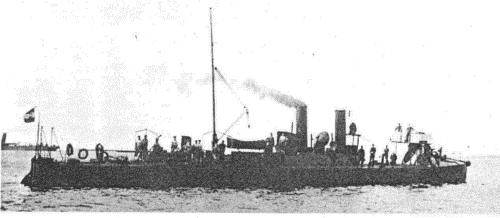
NAVYPEDIA
 Support the project with paypal
Support the project with paypal
Photo

Tb.I 1910 Many thanks to Wolfgang Stöhr for additional information on this page.
Ships
| Name | No | Yard No | Builder | Laid down | Launched | Comp | Fate |
|---|---|---|---|---|---|---|---|
| TB.I, 1910- 1 | 393 | STT, San Marco | 4/1909 | 12.8.1909 | 12/1909 | to Italy 1920 | |
| TB.II, 1910- 2 | 394 | STT, Triest | 4/1909 | 27.9.1909 | 12/1909 | to Italy 1920 | |
| TB.III, 1910- 3 | 395 | STT, Triest | 5/1909 | 8.11.1909 | 12/1909 | to Italy 1920 | |
| TB.IV, 1910- 4 | 396 | STT, Triest | 5/1909 | 2.12.1909 | 12/1909 | to Italy 1920 | |
| TB.V, 1910- 5 | 397 | STT, Triest | 5/1909 | 30.12.1909 | 2/1910 | to Italy 1920 | |
| TB.VI, 1910- 6 | 398 | STT, Triest | 5/1909 | 1/1910 | 11/1910 | to United Kingdom 1920 |
Technical data
| Displacement normal, t | 116 |
|---|---|
| Displacement full, t | |
| Length, m | 43.3 pp 44.2 wl |
| Breadth, m | 4.40 |
| Draught, m | 1.45 |
| No of shafts | 1 |
| Machinery | 1 VTE, 2 Yarrow boilers |
| Power, h. p. | 2500 |
| Max speed, kts | 28 |
| Fuel, t | oil |
| Endurance, nm(kts) | |
| Armament | 2 x 1 - 47/40 SFK L/44 S, 2 x 1 - 450 TT |
| Complement | 20 |
Standard scale images

Tb.I 1909
Graphics
Project history
In 1905 the Austrian Naval Technical Committee presented three different designs for a 110t coastal torpedo-boat, mainly differing in the propulsion system (VTE or turbines). Having insufficient experience with turbines, a final VTE-propelled design with oil-firing was presented in 1907. To compare it with foreign technology, Krupp, Schichau and Yarrow were asked for competitive designs, all of which turned out to be inferior. Initially STT was ordered to build 8 such boats, but this was reduced to 6, because Danubius had to participate. When the older torpedo-boats lost their names in 1910 in favour of arable numbers, these units became in consequence Tb 1-Tb 6. The boats were surprisingly seaworthy up to sea state 5-6, and during the war they saw active service on escort, minesweeping and anti-submarine dunes.
Modernizations
None.
Naval service
All survived and were allocated to Italy in 1920 and scrapped there, with the exception of Tb 3 which served with the Italian customs until 1925.
Many thanks to Wolfgang Stöhr for additional information on this page.
 HOME
HOME FIGHTING SHIPS OF THE WORLD
FIGHTING SHIPS OF THE WORLD AUSTRIA-HUNGARY
AUSTRIA-HUNGARY TORPEDO SHIPS
TORPEDO SHIPS TB.I torpedo boats (1909-1910)
TB.I torpedo boats (1909-1910)
